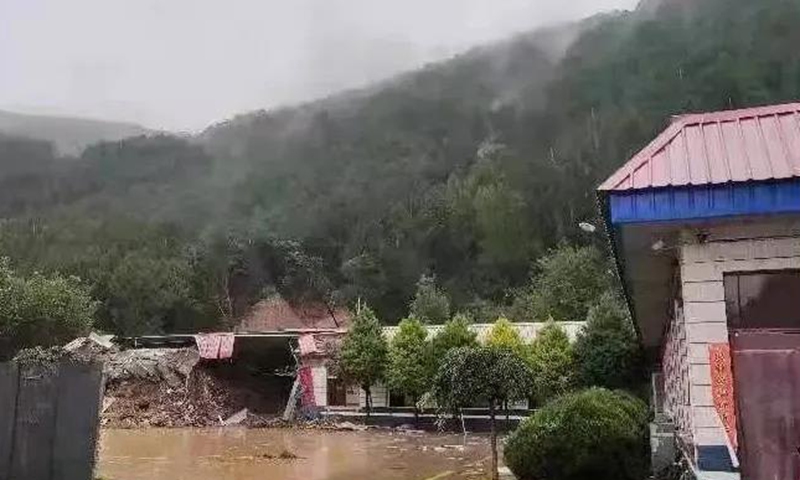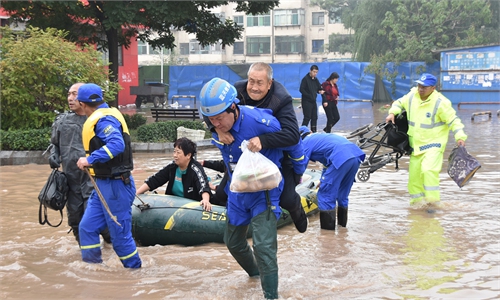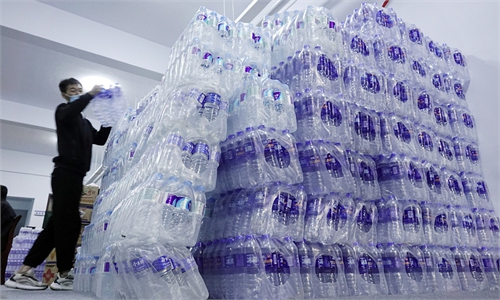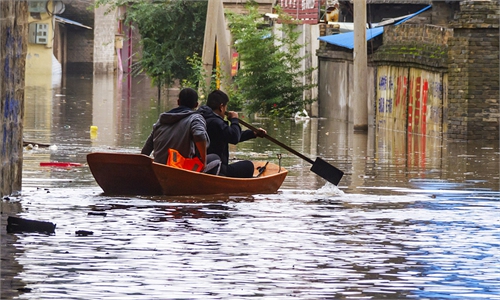
Photo: CCTV
Officials in North China's Shanxi Province, a major coal production base in the country, on Wednesday raised a level-3 emergency response to geological disasters after days of heavy downpours caused floods and landslides that have resulted in four deaths and several injuries and forced the shutdown of several scenic spots and coal mines.Local authorities said five people were buried in a landslide in Puxian county under the city of Linfen on Tuesday. Four of the five were dead, with the fifth injured. The victims were on-duty traffic policemen.
Heavy rain also intensified flooding in a community in Taiyuan, the capital city of Shanxi on Tuesday, with the deepest portion exceeding a meter, affecting nearly 200 households in three residential buildings. Local rescue team was organized overnight to move people to safety.
The province has issued a geological disaster and meteorological risk warning for three consecutive days. Dozens of scenic spots in Shanxi and neighboring provinces - Shaanxi and Gansu - have also been clsoed due to heavy rain.
In Shanxi, 74 scenic spots, including one of the most famous - the Pingyao ancient city, were closed as the province's flood control and drought relief headquarters issued an emergency alert on Monday.
Some scenic spots on grasslands and mountains were shut down temporarily as heavy rain was forecast to hit Shaanxi from Sunday to Thursday.
Heavy rain had also forced Shanxi to shut down 27 coal mines, further exacerbating concerns over coal supplies amid power shortages in some parts of the country. Shanxi also closed 99 other mines and seven chemical factories.
The Lingshi section of the Beijing-Kunming expressway saw nine landslides, interrupting traffic.
Meteorologists said the precipitation in Shanxi in late September was 431 percent higher than the same period in previous years, making the soil saturated in some areas and increasing the risk of geological disasters.
Global Times



